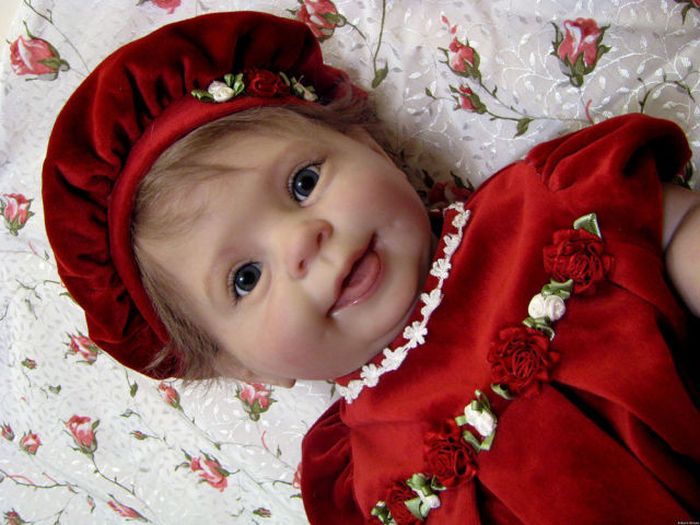|
|
Realistic Reborn Baby Doll
|
In Germany clay dolls have been documented as far back as the 13th century, and wooded doll making from the 15th century. Beginning about the 15th century, increasingly elaborate dolls were made for Nativity scene displays, chiefly in Italy. Dolls with detailed, fashionable clothes were sold in France in the 16th century, though their bodies were often crudely constructed. The German and Dutch peg wooden dolls were cheap and simply made, and were popular toys for poorer children in Europe going back to the 16th century. Wood continued to be the dominant material for dolls in Europe until the 19th century. Through the 18th and 19th centuries wood was increasingly combined with other materials, like leather, wax and porcelain and the bodies made more articulate. It is unknown when dolls' glass eyes first appeared, but brown was the dominant eye color for dolls up until the Victorian era when blue eyes became more popular, inspired by Queen Victoria.
• Industrial era
During the 19th century dolls' heads were often made of porcelain and combined with a body of leather, cloth, wood, or composite materials, like papier-mâché or composition, a mix of pulp, sawdust, glue and similar materials. With the advent of polymer and plastic materials in the 20th century, doll making largely shifted to these materials. The low cost, ease of manufacture and durability of plastic materials meant new types of dolls could be mass produced at a lower price. The earliest materials were rubber and celluloid. From the mid-20th century soft vinyl became the dominant material, in particular for childrens dolls. Beginning in the 20th century, both porcelain and plastic dolls are made directly for the adult collectors market. Synthetic resins like polyurethane resemble porcelain in texture and are used for collectible dolls.
Colloquially the terms porcelain doll, bisque doll and china doll are sometimes used interchangeably. But collectors make a distinction between china dolls, made of glazed porcelain, and bisque dolls, made of unglazed bisque porcelain. A typical antique china doll has a white glazed porcelain head with painted molded hair and a body made of cloth or leather. The name comes from china being used to refer to the material porcelain. They were mass produced in Germany, peaking in popularity between 1840 and 1890, and selling in the millions. Parian dolls were also made in Germany, from around 1860 to 1880. They are made of white porcelain similar to china dolls but the head is not dipped in glaze and has a matte finish. Bisque dolls are characterized by their realistic, skin-like matte finish. They had their peak of popularity between 1860 and 1900 with French and German dolls. Antique German and French bisque dolls from the 19th century were often made as children's playthings, but contemporary bisque dolls are predominantly made directly for the collectors market.
|
|









